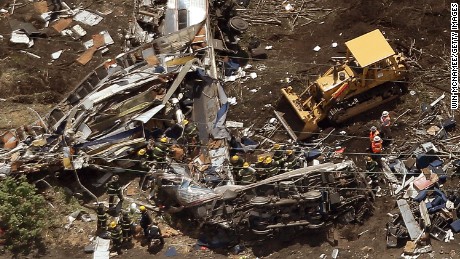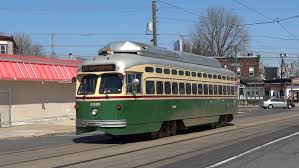An opinion on HYPERLOOP versus AMTRAK from Philly.com
A couple weeks ago, Elon Musk — our nation’s armorless Tony Stark — tweeted that he got the verbal OK to build a high-speed train connecting New York, Philadelphia, and Baltimore. Hypothetically, his Hyperloop could travel 800 mph and get riders from New York to D.C. in the time it takes to watch an HBO comedy. The reaction was split among breathless urbanists begging for more and realists saying that “verbal approval” means nothing. Musk has since stepped up the campaign, with the White House saying it’s had “promising discussions” with him.
This is the kind of pitch that makes upper-class commuters salivate. It’s one step away from being a teleporter!
But here’s the problem: It screws over pretty much every single working-class and middle-income commuter in the city. How dare you build a magic Star Trek train to ferry wealthy folks to and from New York when many Philadelphians can’t even afford a weekly Amtrak ticket! How can you possibly look at infrastructure in this city and think, “What we really need is an even more exclusive train”?
A round-trip Amtrak ticket from Philly to New York costs more than $130. A ride to Harrisburg costs nearly $60. Want to get just to Wilmington? Yeah, that 30-mile ride will run you about $80, round trip. These prices aren’t just unfeasible for the average Philadelphian who needs to get to work. Many local families can’t afford to foot this bill for a holiday visit to see friends and family.
So most people who either can’t use a car, or don’t want to, are doomed to budget buses. Perhaps those lusting for a Hyperloop have never ridden the Greyhound or Megabus before. For the unedified, let me break it down. I was a super-commuter for more than a year, traveling from Philly to New York by BoltBus every morning. The trip often lasted three hours, each minute more nightmarish than the last. The bus reeked of travel-toilet chemicals, broke down on the turnpike regularly, and rattled like a plane flying through a hurricane even on flat road.
In upper-class social strata, there’s this ubiquity about the Acela. Because the wealthy ride it, they assume everyone rides it. In reality, when a well-off Philadelphian urges a not-so-well-off Philadelphian to take Amtrak – and gushes about how they just can’t wait for the vacuum-powered mega-train to be installed – it’s like telling an unemployed post-grad that they simply must go to Ibiza to relax.
Before the nation starts building a high-speed train, it should make Amtrak affordable for all Americans. Currently, the company is little more than a taxpayer-funded luxury service for the rich. Here are three ways to change that, ranging from straightforward to a tad utopian.
1. End the cross-country travel line.
The first solution may sound a bit wonky, but it’s important. Amtrak can make relatively short trips more affordable by ending its cross-country travel lines. Experts say that Amtrak tickets are expensive on the coasts, in part, because our tickets subsidize long-distance trains that crisscross the country. These rides are something of an extravagance – and further proof that Amtrak could not care less about the average commuter – and could be cut in favor of more local trains.
2. Add more trains on the Northeast Corridor.
A second idea comes from Sean Jeans-Gail, vice president of policy at the National Association of Railway Passengers. Just add more trains and cash. He says we pay a premium because the federal government refuses to invest in the improvement and expansion of Amtrak trains and lines. The current situation on the Acela corridor is one of demand greatly exceeding supply — one so egregious that those who can afford to ride Amtrak will pay anything for it, and those of us who can’t, well, who cares? Unfortunately, President Trump is doing the exact opposite of what Jeans-Gail recommends. For all of Trump’s talk of investing in American infrastructure, the White House is cutting $630 million from Amtrak’s long-distance rail budget. This will likely lead to line closures and possibly even steeper prices.
“The only way we can address this issue is by building our way out of it — by dramatically increasing the number of trains on the Northeast Corridor,” says Jeans-Gail.
3. Federalize Amtrak.
The third proposal would amount to a sea change for American travel, but I’m so sick and tired of riding BoltBus that this idea must be pitched: Completely federalize Amtrak. As it stands, the company is technically a private-public enterprise. It has shareholders. It has to appear as though it’s making moves to help the bottom line, even though it operates eternally in the red. Were Amtrak to become a wholly public operation, it would compel the powers that be to install pro-commuter pricing. After all, who expects a public service to make money?
Philadelphians of all stripes should be able to leave the city without blowing up their checking accounts. Let’s figure out how to do that before we worry about shooting attorneys through a tube at 800 mph.











